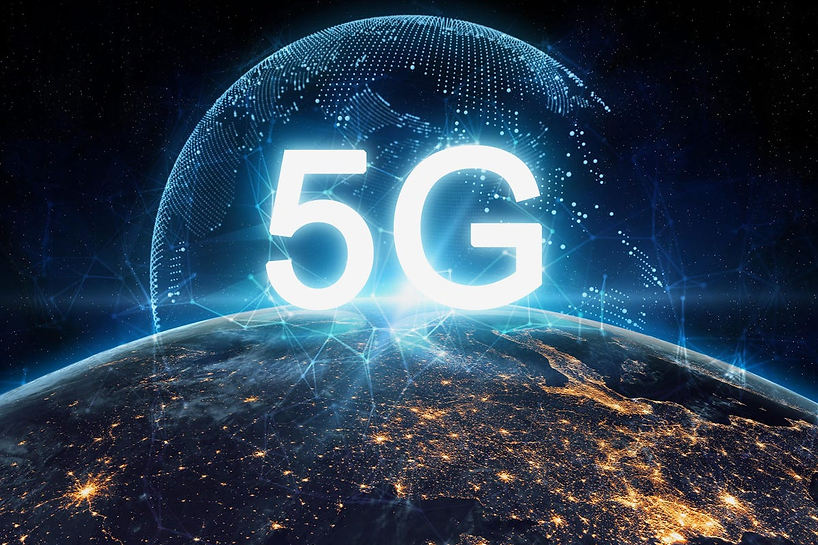One G to rule them all!!!
Imagine downloading a high-definition video at 30 kHz, or 1.6 GHz to 2 GHz. You’d have to wait forever for it to download and then view it on your device. 5th Generation has a speed of 3GHz, you can download a movie in seconds, even if several devices are connected to the same devices’ Wi-Fi.
The fifth-generation mobile network is referred to as 5G. After 1G, 2G, 3G, and 4G networks, it is a new world wireless standard. 5G allows for the creation of a new type of network that connects nearly everyone and everything, comprising machines, objects, and gadgets.
5G wireless technology can provide multi-gigabit per second peak data speeds, ultra-low latency, greater dependability, a huge increasing network, greater availability, and a more consistent user experience for a larger number of users. Higher performance and efficiency allow for new consumer experiences and industry connections.

What are the distinctions between previous mobile network generations and 5G?
The first version, 1G, was introduced in the 1980s and supplied the analog voice. 2G stands for the second generation. 2G offered a digital voice in the early 1990s. The third generation was introduced in the early 2000s, bringing mobile data to the masses. 4G LTE stands for the fourth generation. In the decade of the 2010s, 4G LTE ushered in a new era of mobile broadband. 1G, 2G, 3G, and 4G all lead to 5G, which is intended to give greater connectivity than ever before. 5G is a more capable and unified air interface. It has been built with increased capacity to support next-generation user experiences, new deployment patterns, and service delivery. 5G will take the mobile ecosystem to new heights with its high speeds, high dependability, and low latency. Every industry will be influenced by 5G, with safer mobility, remote healthcare, precision farming, computerized logistics, and more becoming a reality.
What makes 5G superior to 4G?
5G is a more capable unified platform than 4G. While 4G LTE focused on providing dramatically faster mobile internet services than 4G. 5G is intended to become an uniform, more robust platform that not only improves mobile broadband experiences but also supports additional services like mission-critical connectivity and the huge IoT. All spectrum types (licensed, shared, unlicensed), as well as bands (low, mid, high), are natively supported by 5G, as well as a wide range of deployment patterns (from typical macro-cells to hotspots) and innovative methods to interact. 5G utilizes bandwidth better than 4G. 5G is also designed to make the most of every available MHz of spectrum across a wide range of spectrum regulatory paradigms and bands, including low bands below 1 GHz, mid bands between 1 GHz and 6 GHz, and high bands known as millimeter waves. 5G is significantly faster than 4G. 5G has the potential to be substantially faster than 4G, with peak data rates of up to 20 Gigabits per second and average data rates of 100 Megabits per second (Mbps). The capacity of 5G is more than that of 4G. 5G promises a 100-fold improvement in traffic capacity plus network efficiency. The latency of 5G is lower than that of 4G. 5G has substantially lower latency, allowing for more rapid, real-time access: the end-to-end latency has been reduced by tenfold to just one millisecond.
How fast does 5G go?
According to IMT-2020 specifications, 5G is expected to achieve peak data rates of up to 20 Gbps. The Qualcomm Snapdragon X65, Qualcomm’s flagship 5G solution, is designed to produce downlink peak data rates of up to 10 Gbps.
However, 5G is about much more than speed. 5G is designed to give substantially greater network capacity through expanding its services spectrum, such as mmWave, in areas with higher peak data speeds.
5G can also provide significantly lower latency for faster response times and a more consistent user experience, ensuring that data rates remain high when users move around.
5G is capable of Societies advancing.
5G opens up new avenues for enhancing safety and sustainability.
More intelligent electricity grids will result in significant reductions in carbon emissions. To avoid road collisions, more linked vehicles are sharing data. Emergency services can be dispatched more quickly in the event of an accident. Sensors that are connected can identify and warn about natural disasters in real-time. Drones are becoming a critical tool for accelerating and supporting emergency response. Expertise from afar, with specialists consulting and diagnosing patients in other locations. Furthermore, it is capable of modernizing industries. 5G provides the foundation for a company that is adaptable, efficient, and responsible. Production lines that adjust to market forces on their Digital copies can predict real-time machinery failures.
Logistic networks route commodities autonomously based on real-world circumstances. At warehouses and ports, full surveillance down to an individual item is available. For increased safety in dangerous areas, remote management of powerful robotics and vehicles is available. Increased usage of IoT within agriculture to grow crops more efficiently. Additionally, it is also capable of Exciting adventures. 5G paves the way for more realistic entertainment and educational opportunities. With lighter gadgets, VR, AR, and enhanced reality (XR) can be more realistic. Using technology to deliver sensory sensations such as touch Immersive material and more engaging teaching methods, virtual meetings can help remote teams work more efficiently. In congested areas, stable and dependable connectivity is essential. For continuous and remote event viewers, new perspectives and interactions are available.
If you want to use the network, you’ll need to switch to the new mobile that supports 5G. Smartphones with Snapdragon 5G Mobile Platforms, for example, are 5G capable. Various new mobile phones enable 5G, as well as the 5G wireless communication that is supported by multiple carriers around the world. More cellphones and operator subscriptions will become accessible as the 5G rollout schedule progresses, as 5G capabilities and 5G portable devices become more prevalent.
Metropolitan cities could use 5G in a wide range of ways to improve the lives of residents, primarily by providing greater efficiencies in areas such as automotive safety, infrastructure, virtual reality, and entertainment, by providing more interconnection between people or things, higher bandwidth speeds, and reduced latency than ever before.





